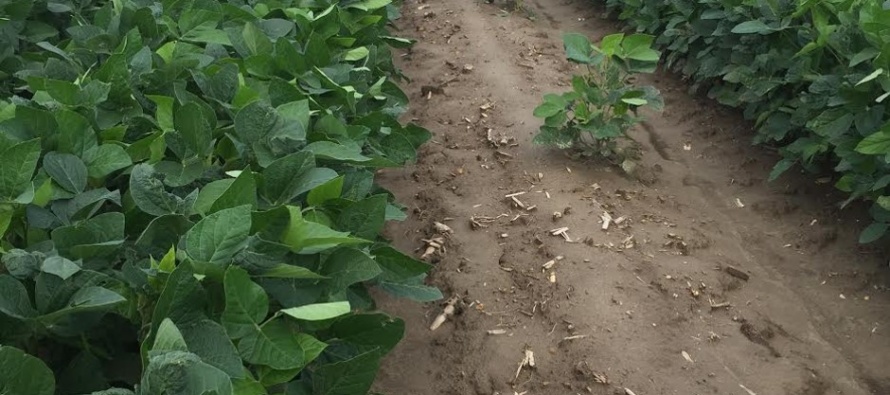Missing Rows in Twin Row Soybeans

Related Articles
- Calcium and Magnesium For Mississippi Crops 1
- March 11 Precision Agriculture Workshop 0
- Ground Speed Affects Spray Droplet Deposition 0
Latest Tweets
As we start to see the soybeans from the last couple rounds of planting emerge, we will begin to notice some planter problems that occurred. These can include skips, blanks spots, and even whole rows missing. With the popularity of the twin-row planting system for soybean in Mississippi, we decided to examine the effect of some common twin-row planter problems on soybean canopy closure and yield.
Studies were established on a light silt-loam soil in Scott, MS at the Monsanto Learning Center and at on a heavy clay soil at DREC in Stoneville, MS.
The four situations that we looked at were (see figure):
None: No problem-regular stand
Single: One of a pair of twin rows missing
Separate: One of a pair of twin rows missing on two consecutive beds
Whole: Both twin rows missing
Here is what we found:
LIGHT SILT LOAM:
No yield loss for a single missing twin row or two separate missing twin rows. There were enough plants in the remaining twin row to be able to compensate for the other missing row. There was also sufficient canopy development to discourage weed growth and we had no significant problems with weed control.
However, when both twins in a row were missing we saw a 5-6 bushel/acre yield loss. This was due to decreased light interception in the missing row. The decreased canopy in the missing row also resulted in a number of weeds (primarily Palmer) emerging that needed hand weeding/hoeing to remove.
HEAVY CLAY:
When only a single twin row was missing again we did not see any yield loss compared to a full stand. Even on the heavy soil, the soybeans in the remaining twin row were enough to fill the canopy and produce a similar yield.
However, when a twin was missing in two adjacent rows we saw a 2-3 bushel yield loss. Despite the small yield loss, the remaining rows provided enough canopy closure to prevent weed growth and we didn’t have any problems with weed escapes.
When both twins in a row were missing we saw a 8-9 bushel/acre yield loss. Similar to the lighter soil we had to deal with weed escapes that required hand weeding/hoeing.
TAKE HOME:
On both soil types if you are missing both twins within a row, it looks like you are:
- Going to lose some yield
- Have some problems with weeds
If you can figure out a way to fill those missing rows in with at least a single row, you might get some yield back and it will help the canopy fill-in to prevent weed escapes. You could also consider replanting the field, or figure out a way to manage the weeds in the missing areas as best as possible.
However, on both light and heavy soils, if you planted your soybean crop and are missing only one of the pair of twin rows, you will likely have sufficient plants in the remaining row to compensate. You don’t need to find a way to go back into the field to replant the missing twin. Just leave it alone for a few weeks and you likely will not even notice once the canopy fills in.
If you have any questions, please give us a call.








Very good and pertinent study. These scenarios happen with some frequency. Thanks